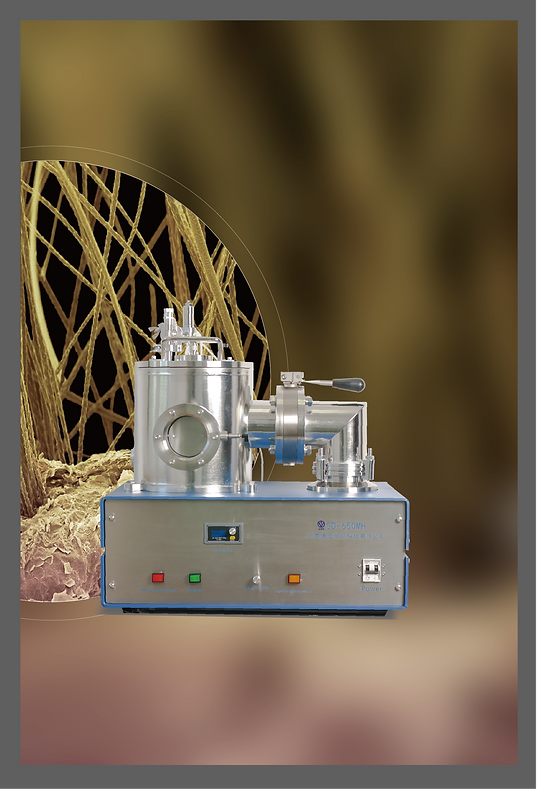Einheitlichkeit der Dickenabscheidung
Einführung
Die Magnetron-Sputter-Beschichtung wird in großem Umfang bei der großflächigen Abscheidung angewendet, und der Gleichmäßigkeit der Dünnschichtdicke, dem Abscheidungsverhältnis, dem Ausnutzungsverhältnis des Zielmaterials und anderen Problemen in der Beschichtungsindustrie wird große Aufmerksamkeit geschenkt.
Ob es darum geht, einen Halbleiterchip mit einem dünnen Schutzfilm zu beschichten oder eine Antireflexbeschichtung auf ein Brillenglas aufzubringen, Prozessingenieure müssen bestimmte Dickenspezifikationen erfüllen, um die Leistungsanforderungen zu erfüllen. Ebenso wichtig wie die Filmdicke selbst ist die Gleichmäßigkeit der Dicke.

Faktoren, die die Abscheidungsleistung bestimmen
Die Abscheidung, ein Prozess zur Abscheidung dünner Materialschichten (oder Filme) auf einem Substrat, ist eine gängige Praxis in Branchen wie der Halbleiter- und Nanotechnologie. Die Dünnfilmabscheidung kann mit einer Vielzahl von Technologien erreicht werden, die Filme bereitstellen können, die von Isolatoren über Halbleiter bis hin zu Metallen reichen. Die Filme können ebenso unterschiedliche Rollen erfüllen, die von Zwischenschichtdielektrika bis hin zu Zwischenverbindungen reichen.

Flexibilität
Flexibilität, das Leistungsspektrum eines Systems, kann ein wichtiger Faktor bei der Entscheidung sein, welche Art von Abscheidungssystem angeschafft werden soll. Dies gilt eher für F&E-Umgebungen als für industrielle Anwendungen, bei denen häufig spezifische Lösungen bevorzugt werden. Das Verständnis der Materialien, die abgeschieden werden können, Substratgrößen, Temperaturbereiche, Ionenfluss, Abscheidungsraten, Frequenzen, Endpunkt und Druckbetriebsregime sind nur einige der Überlegungen. Flexibilität ist auch eine Systemqualität, die eine Planung für die Zukunft ermöglicht. In F&E ändern sich die Prioritäten, und es ist nützlich, ein System zu haben, das mit diesen Änderungen umgehen kann. Auf diese Überlegungen kommt noch das Budget. Abhängig von der Art der Technologieoptionen können die Systeme erheblich im Preis variieren.
Prüfbericht für VPI-Beschichter Modell:SD-900M
Linkes Seitenbild
Results & Conclusions
Shows the result of the X-ray diffraction of the Ga2O3 films growth with various O2 flow rates. The diffraction peaks located at 29.7°, 37.6°, and 58.4° originate from the 400, 402, and 603 of the β-Ga2O3, respectively. For the sample without the O2 flow rate, 400, 402, and 603 of the β-Ga2O3 diffraction peak coexisted; this suggests that the sample was polycrystalline. With the O2 flow rate increased from 0 to 4 sccm, the diffraction peak intensity of the 400 β-Ga2O3 decreased, while the intensity of both the 402 and 603 of β-Ga2O3 diffraction peak increased. Both of these two diffractions belong to the 201 plane family of the monoclinic Ga2O3. The above result illustrates that highly 201-textured β-Ga2O3 samples have been prepared and the orientation of crystal is gradually enhanced when oxygen flow increased. Furthermore, the full width at half maximum (FWHM) values of the 402 β-Ga2O3 peaks are 1.00°, 1.10°, 1.06°, and 0.96° for samples with the O2 flow rate increased from 0 to 4 sccm, respectively. The FWHM value is dependent on the O2 flow rate, and the results suggest a higher O2 flow rate results in improved crystal quality. The minimal FWHM is obtained at 4 sccm of the O2 flow rate, which means the grain size is the largest. The combined results of the XRD peak intensity and the FWHM value of the samples show that higher O2 flow rates lead to better quality.
In summary, in terms of the effect of oxygen flow on the structure, optical l properties of the Ga2O3 films have been investigated by XRD, EDX, AFM, transmission spectra, and PL spectra. With the increase in the oxygen flow rate, both the crystal quality and luminescence intensity of the sample first decreased and then enhanced. All these observations suggested that the reduction in the oxygen defect density is responsible for the improvement in the crystal quality and emission intensity of the material, however, there have been no reports about O2 flow rate on the properties of the Ga2O3 growth by RF magnetron sputtering. Our results were similar to those obtained by other techniques and the specific control of various experimental operating parameters. Vu found that the performance of β-Ga2O3-based photodetectors with a higher oxygen partial are better than those prepared at lower oxygen pressures. Wang et al. studied the influence of oxygen flow ratio on the performance of Sn-doped Ga2O3 films by RF magnetron sputtering; they found the sample with higher oxygen flow ratio displays an enhanced performance. Shen’s study revealed oxygen annealing will enhance the performance of β-Ga2O3 solar-blind photodetectors grown by ion-cutting process. Our results demonstrated that high-quality gallium oxide materials can be obtained by adjusting the oxygen flow rate.